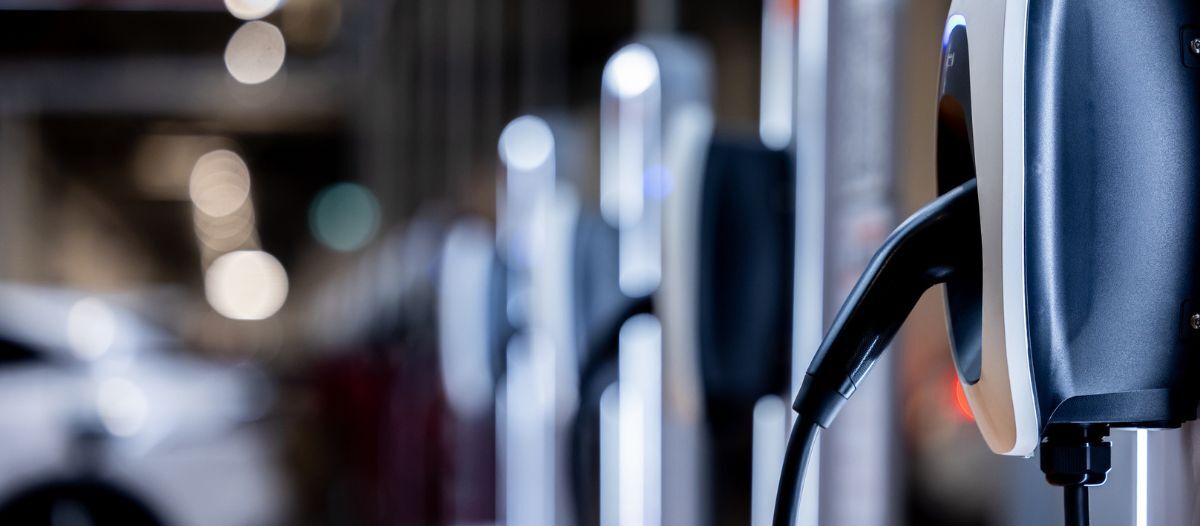The 3Ds
Installing cost-effective EV chargers

Industry headwinds from recent state and federal legislation, like the Inflation Reduction Act, to billions in investment from OEMs are rapidly accelerating the growth of the electric vehicle (EV) industry. With the number of EVs in the U.S. forecasted to reach 26.4 million by 2030, 12.9 million chargers are needed across the country to meet this demand.
Experts across the EV industry anticipate that the millions of new EVs on the road will be charged not at refurbished gas stations, but in single-family homes, residential buildings, office spaces and other commercial properties where drivers already live, work and visit.
Misconceptions about the high cost and difficulty of installing EVSE (electric vehicle supply equipment) should not hold facility managers back from investing now to be prepared for the electrified future. With enough pre-planning and asking the right questions upfront, installing EV charging stations is a simple process that typically takes an electrician less than one hour to connect, commission and test. The 3D’s can help guide building owners and FM through the installation process, with key considerations to keep costs low.
Distance
The first consideration facility managers should keep in mind is the distance from the power source to the EV charger. Generally, the closer the chargers are installed to the power source, the cheaper the total installation cost. When feasible, consider pulling power from a nearby electrical room or wall panel versus installing a new meter and service from a nearby utility transformer.
Installation of EVSE at commercial locations can be complex and typically require local permitting or submittal documentation. A few items to keep in mind when conducting commercial EV installs:
-
Check local zoning codes and requirements
-
Keep in mind community design guidelines
-
Electrical source and metering
-
What parking and signage is needed
-
If there are any permit and inspection fees
Some commercial installations may require a modification to an existing use permit or site plan addressing specific community or zoning design criteria. Be sure to address those needs and requirements with the municipality or county prior to submitting permits to understand all of the codes and fees.
Diameter
When installing an electrical conduit to connect the electrical panel to the pedestal or wall-mounted charger, FMs should consider pulling more conductors than needed. This allows property owners the ability to increase EV charger capacity without installing additional panels, conduit, wiring or needing to go through the permitting process again to install more chargers. Planning can save businesses additional costs down the road as they expand EV charging capacity to meet new growing demand.
Diameter choice and pre-planning also enable the facility to offer the fastest charging experience available. Installing EV chargers with the highest possible amperage will allow for the best customer experience and allow managers to better prepare the location for future demand as well as create a higher return on their investment for the power from charging stations. For example, a 100-amp EV charging station will put out 80 amp an hour, versus a 40-amp charger that only puts out 32 amp per hour that results in a lower ROI. Before starting the installation process, FMs should contact their local electrical company to determine options.
An additional consideration is to contact an electrical provider to see if flat rate pricing can be obtained for the property, so that electricity pricing does not change throughout the day as demand increases. Controlling the cost of electricity is a key component of the ongoing operation once the EV charging stations are operational.
FMs should think critically about their current charging needs and equipment cost. Not all buildings will need DC fast chargers, as they can add an unnecessary burden to energy bills. In addition, Level 2 chargers use electricity at a lower rate and are often hundreds of dollars less expensive than DC chargers in their early stages of development.
Difficulty
Approaching the EVSE installation process with the goal of reducing the level of difficulty will reduce costs and shorten the installation process. FMs who partner with EV charging companies will run through installation options during the site visit and should consider simple solutions whenever possible, such as:
-
Location of the charger. Installing a wall-mounted EV charger over a pedestal charger can reduce costs and avoid the need to trench or bore. Wall-mounted EV chargers can take less space when installed in small parking facilities.
-
Boring vs. digging. Many organizations find it much more cost effective to rip up and replace grass and landscaped areas rather than the process to bore under or cut and replace concrete or asphalt. Running through landscape easements is preferred to sidewalks or driveways/concrete parking areas.
To that end, simplicity will accelerate the approval process for local and state permitting.
Other considerations
Along with the prominent 3D’s of charger installation, FMs should consider other relevant factors such as prioritizing placement of EV chargers in areas with reliable cellular service, so the chargers are able to connect to app-based and in-car EV charging station locators. Connecting chargers to Wi-Fi, instead of a direct cellular connection, may create technical problems down the line when Wi-Fi networks are down for maintenance. Whether connecting via Wi-Fi or a cellular signal, maintaining a stable connection
will ensure that installed chargers will appear for EV drivers on platforms such as Plugshare, Google and Apple Maps. For sub-basement facilities that may not have cellular access, installing a cellular repeater is a good option to ensure connectivity.
Solving data connectivity issues during the installation process maximizes the return on investment and ensures that EV charger customers will have a seamless and fully interoperable experience. Many municipalities and agencies are including ADA standards to be applied in the installation of EV charging stations, although the ADA Standards for Accessible Design do not yet specifically address EV charging stations. However, accessibility must be considered in the design and placement of charging stations to provide equal access for people with disabilities in the use these charging stations.
FMs should also consider financial benefits to EV charging installation. EV charging stations can convert locations into prime destinations for visitors, encourage EV drivers to linger longer at locations, and create direct revenue streams by billing customers for the amount of energy used or the duration of their charge (dependent on state).
In addition to this framework to keep costs low during installation, there may be incentives and rebates to offset EV charging stations from local utilities. More details can be found by speaking with an EV charging service provider or visiting the Alternative Fuels Infrastructure Database at https://afdc.energy. gov/laws/search.
Partnering with an experienced EV charging provider that considers the 3D’s of EV installation will ensure that the key questions can be answered before a shovel hits the ground, keep costs low, and maximize long-term ROI.

Read more on Technology and Finance & Business or related topics Energy and Occupant Services
Explore All FMJ Topics









